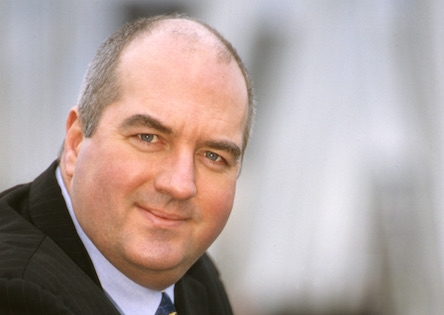
Phil Billingham: Are IFAs still really distributors?

I had an especially stupid email recently. Yes – from a product provider – how did you guess? I’ll protect the guilty and not name them here. But the email was a ‘Vendor Assessment’, asking about our ‘Distribution Strategy’ and if we have ever broken our own rules.
So the email assumes we are ‘Vendors’, and that we have a ‘Distribution Strategy’.
For the avoidance of doubt, we have never, ever recommended them.
We have a couple of clients we took over who have existing assets with them – not for much longer – and they account for perhaps 1% of the assets we advise on. And that’s getting less, as the performance of that portfolio has been especially dreadful.
I just don’t know where they got ‘Vendor’ from. The other more interesting part is the ‘Distribution’ part.
In theory, on 29 April 1988, when ‘Polarisation’ was introduced, ‘Independent Financial Advisers’ – IFAs - ceased being ‘Distributors, and became the agent of the client, rather than of the product manufacturers.
It could then be argued that this transition was, at best, patchy. Being the agent of the client while being paid commission by the provider was a conflict of interest that blurred the line, and focussed the ’I’ part of IFA as being a form of ‘Whole of Market’, rather than independent of the market.
We then had RDR (the Retail Distribution Review), which ensured that – whatever the payment mechanism – payments to advisers are the client's money.
So Independent Financial Advisers are paid by the client to give advice and service.
That should have severed the ‘Distribution’ link and model. But that then left a whole raft of providers who had built a business model based on IFAs finding the clients, giving the advice, taking the liability for that advice and then giving the client's money to the provider.
And that meant an army of people with the words ‘Distribution Manager’ in their job title. They needed the model to continue.
One way to do that would have been to return to the model most seen around the world – Direct Sales.
But this had failed too often and too hard in the UK to be contemplated. Bancassurance, anyone?
Some providers saw the writing on the wall, and transitioned to become platforms instead. With mixed results. But what of fund houses and older providers?
The first point to accept is that there is little actual new money around. See Ned Cazalet’s report from 2006 ‘Polly Put the Kettle On’ for more detail.
So the growth of Assets Under Advice in the IFA sector has largely been at the expense of old, expensive and inefficient - often life company – monies being put to better use.
We all know this story. The question is - where we go from here? We have massive over capacity in the market. Who needs 9,000 ‘me too’ funds?
In a rational world, 50% or more of funds and fund management groups would simply close their doors and head off to do something else.
In the real world, that’s just not going to happen, until and unless the market or the regulator forces their hands. It appears that the Consumer Duty could be an existential threat to some of these firms.
They are left with increasingly narrow and difficult routes to market, with fees being driven down by competition from Vanguard and Blackrock and others.
Ideally, they would reinvent themselves by ‘Distributing’ simple, safe, low-cost products to lower and middle income households, through trusted ‘Distributors’ such as Tesco (other supermarkets are available) and Amazon. Adding real value to society.
But how do you put that on expenses….?
Phil Billingham FPFS CFP Chartered Financial Planner, Chartered Fellow (Financial Planning) is a Financial Planner and a director of Perceptive Planning, a Chartered Financial Planning firm based in London and Essex. https://www.perceptiveplanning.co.uk/
Biography: Phil joined the profession in 1982 and is a past director of the Institute of Financial Planning (IFP) which merged with the CISI in 2015. He is a past member of the Financial Planning Standards Board (FPSB) Regulatory Advisory Panel. He is a specialist in helping advisers cope with regulatory change and has worked with advisers, planners and regulators in the UK, Europe, USA, Canada, South Africa and Australia. He writes this column most months for Financial Planning Today.
